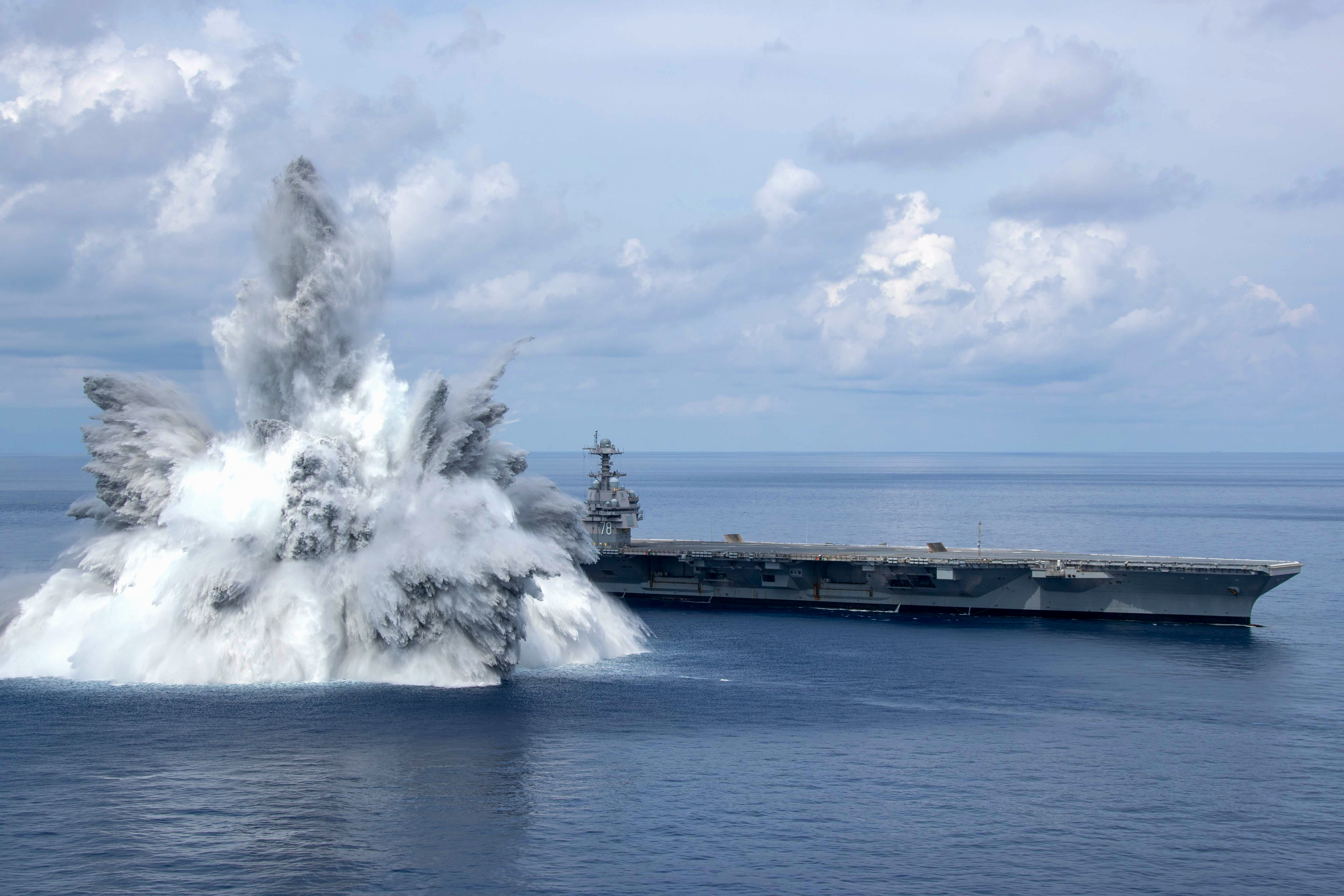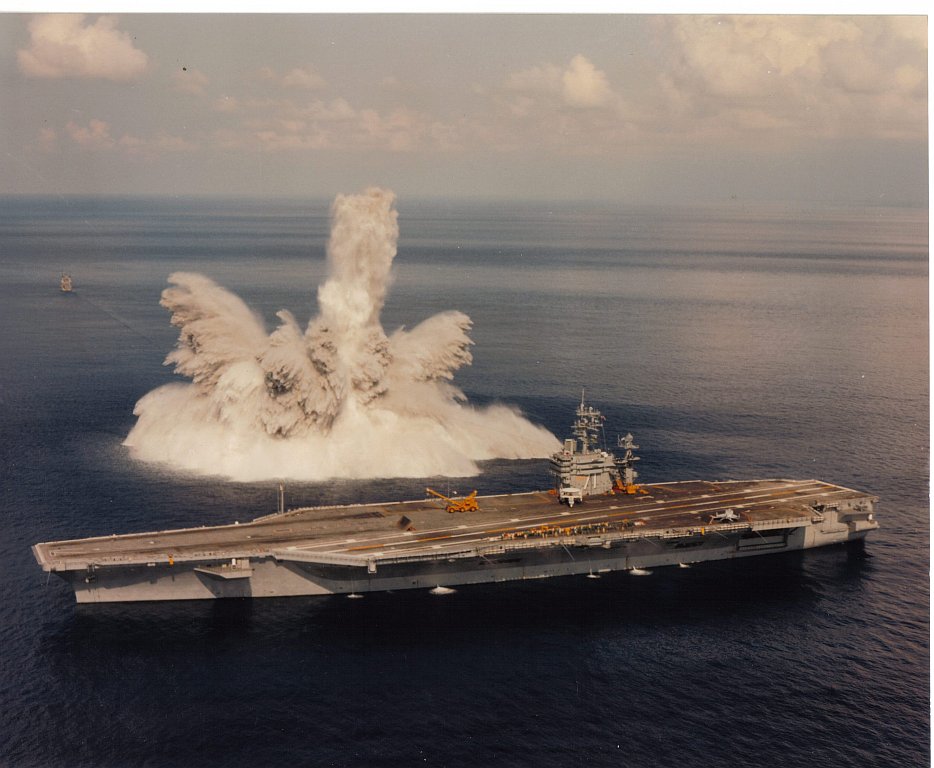
USS Gerald R. Ford (CVN-78) successfully completes the third and final scheduled explosive event for Full Ship Shock Trials while underway in the Atlantic Ocean on Aug. 8, 2021. US Navy Photo
The Navy’s newest aircraft carrier finished shock trial testing on Sunday after the service detonated the third and last explosive charge near the ship’s hull off the coast of Florida.
Service officials described the shock trial testing – where the Navy detonates 40,000 pounds of ordnance in the water near the hull to test both the ship and its systems – as a success, with no major injuries, no fires and no flooding.
“We had zero catastrophic failures on the ship, zero situations where we had flooding or anything, and zero fires. All that is pretty significant,” Capt. Paul Lanzilotta, Ford’s commanding officer, told reporters in a call on Monday.
Helicopters landed on Ford “within minutes” of the detonation, while other assets could move around the deck, Lanzilotta said.
Lanzilotta declined to provide a list of what broke during the testing but said the team prearranged to make any necessary fixes during the carrier’s upcoming planned incremental availability.
“I definitely know that we have added items to our planned incremental availability, however, we actually planned for that,” Lanzilotta said. “And nothing that I’ve seen reported to me so far is in the category of so much more work than I expect it to add to the scope of the availability in terms of schedule.”
Ford finished its post-delivery test and trials (PDT&T) phase earlier this year before the first of three shock trial tests in June. The carrier will soon begin the PIA ahead of an expected deployment in 2022.
“In general terms, we reduced the projection for the PIA two years ago by about 50 percent, and up through shot two, we were well under running those projected hours. So we’ll come through this . . . yesterday’s event over the next week or two and provide some updates for the PIA, but we appear to be well within the projected scope,” Rear Adm. James Downey, the program executive officer for aircraft carriers, told reporters. “By the way, the scope for the PIA related to full-ship shock trials, is approximately five percent of the work that we’re doing in the PIA. Most of the work in the PIA relates to final new modernization of systems getting ready for current advanced strike group operations and similar systems.”
Following the blast, the crew tested the ship’s Dual Band Radar to see if it would function after the explosion.
“After each event, the ship has done a detect, track, engage sequence, and the ship has used those systems to do that,” Downey said.
Only Ford will use DBR, described by Pentagon testers as having “low reliability,” while the rest of the carriers in the class will field Raytheon’s Enterprise Air Surveillance Radar (EASR).

Shock blast detonated off the starboard side of USS Theodore Roosevelt (CVN-71), Sept. 19, 1987. US Navy Photo
This summer’s testing of Ford marks the first full-ship shock trials for a Navy aircraft carrier since 1987, when the service tested the Nimitz-class USS Theodore Roosevelt (CVN-71).
Asked what has changed since the last carrier full-ship shock trials, Downey noted that many of the systems in the 1980s were analog, while systems on the new Ford-class carrier are digital. Throughout the design process for Ford, Downey said the Navy used three-dimensional modeling to try to predict how the shock trial tests would impact the systems.
“How do you model that and project what the effects will be? So that has evolved over the last 20 years in the design process. Those are some of the considerations. The other consideration is how do you go from dealing with the fundamentals of shock of hardening – physically hardening – versus whether an end-to-end computer system will run,” Downey said.
“It’s really been the use of these 3-D models in designing the ship and where we’re going with [CVN-]80 and 81 for the digital build process,” he added. “And this larger team will collect that data and come back and show us against what the projections were versus the data collected from all these sensors.”
